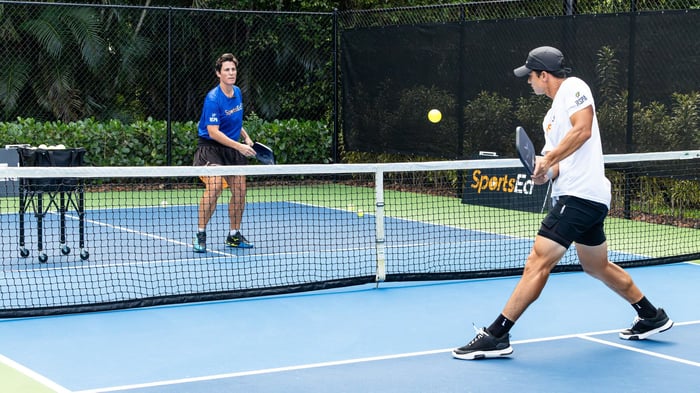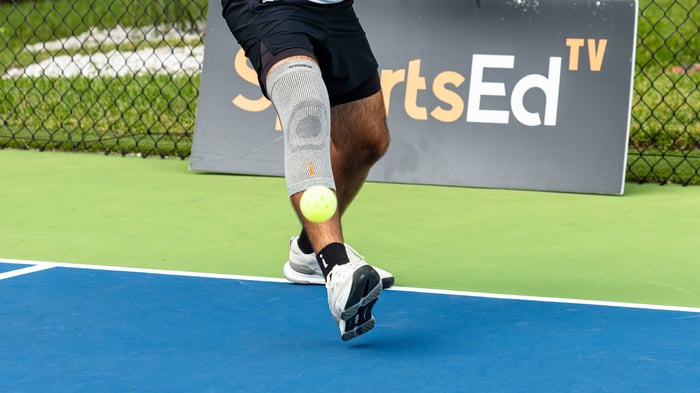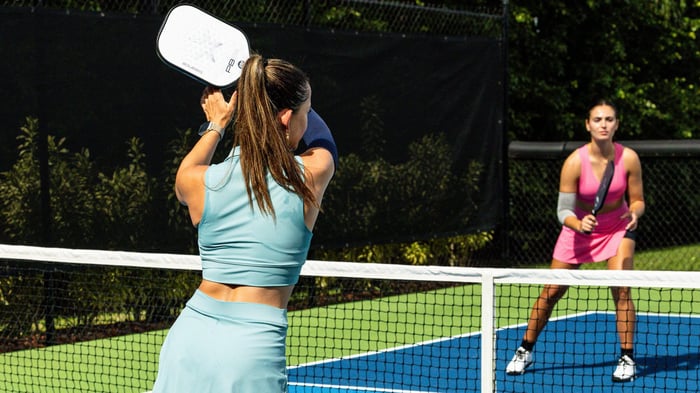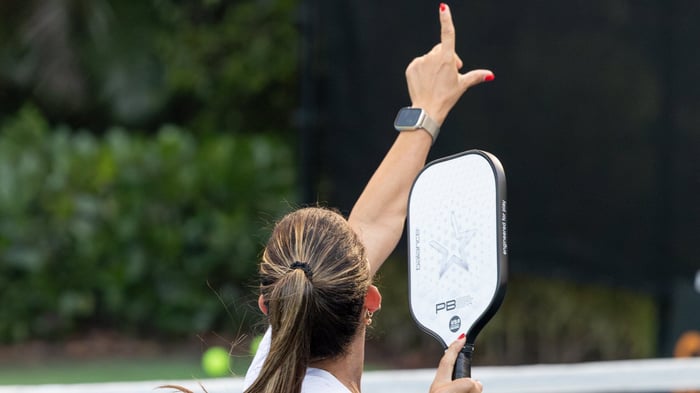Key takeaways:
Sharpening your observational skills in pickleball starts by watching your opponent's paddle position and body language to predict their next move.
Recognizing familiar gameplay strategies, such as dominating the non-volley zone and mixing shot speeds, allows you to counter smarter and stay a step ahead.
Spotting subtle foot movements, grip shifts, and serve routines gives you valuable time to react and play with more intention.
Reading your opponent is one of the most overlooked yet impactful skills in pickleball. It's more than simply returning a shot; it's about anticipating what's coming next based on subtle cues like paddle angles, foot positioning, and body language. Players who master this kind of observation don't just stay in rallies longer. They take charge of the point before the ball even crosses the net.
To make that leap, you need more than sharp instincts. You need reliable gear, smart training, and a supportive community. That's where PB5star stands out, offering performance-ready apparel and equipment that support serious pickleball athletes at every level.
Identifying and countering common strategies
Mastering the ability to observe and anticipate your opponent is a game-defining skill. It's game-changing. Great players pick up on subtle habits and use those details to control the match. When you combine this awareness with proven tactics, your strategy becomes sharper and more effective.
Paddle position is your early clue: A dropped paddle tip often signals a dink or soft shot. A raised position usually means a drive is coming your way.
Footwork tells you intent: Charging toward the kitchen? They're likely planning an attack. Moving backward or pausing? They're preparing to reset or defend.
Pre-match warm-ups are packed with intel: Does your opponent favor forehands? Avoid backhands? Repeat the same serve? Those habits are gold for your strategy.
Stay calm between points: Tension clouds judgment. Use deep breaths to refocus, reset, and gear up for the next rally.
Switch between the ball and your opponent visually: This eye-bounce technique helps you anticipate better and move faster
Non-volley zone control: Take position early and stay balanced to neutralize aggressive baseliners. A low athletic stance keeps you quick and responsive.
Vary your shots: Blend dinks, drop shots, lobs, and line drives to keep your opponent constantly adjusting. Variety makes your gameplay harder to read.
Strengthen your backhand: It's often targeted. Mastering control and placement here lets you turn the tables.
Sync up with your doubles partner: Communicate constantly. Hand signals, quick calls, and mirrored movement help close gaps.
Control the tempo: Don't match their pace. Challenge it. If they go soft, surprise them with a quick drive. If they're aggressive, slow the point with a dink.
Looking for the gear to back up your strategy? PB5star's men's pickleball apparel and women's pickleball clothing are made for players who stay fast on their feet while staying comfortable during extended play.
Interpreting body language and reading signals
Pickleball isn't just about the paddle and ball, it's about observation, instincts, and timing. The way your opponent moves, stands, and prepares tells you a lot about what's coming next. By combining visual cues with smart interpretation, you can take control of the point before the ball is even hit.
Shoulder and hip rotation often indicate where the shot is heading. Watch for early shifts in direction and weight.
Foot stance gives away shot type. A wide, grounded stance usually signals a powerful drive, while a narrow, relaxed position suggests a softer shot like a dink.
Paddle grip height shows their intent. A high paddle often means they're ready to defend. A low paddle suggests they're gearing up to attack.
Paddle angles speak volumes. If it's facing up, expect a lob. If it's tilted forward, a drop shot may be coming.
Weight shifts hint at direction. Leaning forward signals offense. Leaning back likely means they're preparing for defense.
Grip changes matter. A tighter grip often leads to power shots. A looser one points to finesse.
In doubles, keep an eye on hand signals. Partners often flash signs to cue positioning or shot direction.
Pre-serve routines reveal habits. Whether it's a specific bounce pattern or stance, these motions help you anticipate the serve type.
Keep your own body language neutral and consistent. Use the same ready position for every shot to avoid giving away your strategy. Between points, stay relaxed and alert. A confident, calm posture can keep your opponent guessing and off balance.
To react faster and stay grounded, your shoes matter just as much as your reads. PB5star's court shoes and sneakers are built for quick pivots and fast transitions, helping you stay in control no matter how quickly the game moves.
Frequently asked questions (FAQs) about reading your pickleball opponent
Even the most experienced players run into challenges when trying to read an opponent. These common questions shed light on how to develop sharper instincts and make quicker, more confident decisions on the court.
How can I avoid common mistakes when reading opponents?
Don't rely only on paddle direction. Pay attention to the whole picture. Foot movement, hip rotation, and grip changes tell you just as much, if not more.
What's the best way to practice reading opponents off the court?
Watch high-level matches and try to guess shots based on movement and posture. Filming your own games also helps. You'll spot patterns that weren't obvious in real-time.
Which strategies work best against unpredictable players?
Stay grounded in the basics. Strong footwork and a centered, ready position help you respond without overcommitting. Over time, even unpredictable players settle into patterns.
How does doubles change the opponent-reading game?
You're reading two players instead of one. Focus on their communication, hand signals, and positioning. See who takes the lead and how they rotate. Those patterns are key.
How does having the right gear improve your ability to read opponents?
Good gear supports fast, flexible movement. Lightweight paddles help you react faster. Court shoes give you traction when changing directions based on your opponent's cues.
Master your strategic play
Success on the court takes more than quick reflexes. Recognizing patterns, anticipating your opponent’s moves, and adapting with intention are what set skilled players apart. Owning your side of the court means turning smart reads into decisive plays.
From spotting paddle angles to recognizing foot positioning and pacing, these small observations shape a stronger, more thoughtful game. The players who succeed consistently are the ones who notice what others miss.
Top performers also surround themselves with those who challenge and support their growth. Whether you're aiming for tournament-level precision or refining everyday gameplay, progress comes from staying focused and ready.
PB5star gives you that edge with gear trusted by athletes who demand comfort and performance on the court. Check out PB5star gear here







